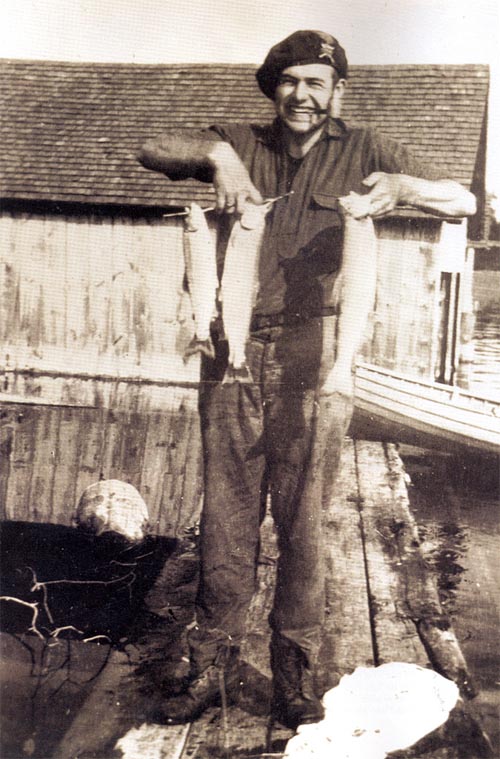
Why feel like this at a conference…

…when you could feel like this?
Welcome back to my ongoing series on the philosophy, strategy, and construction of an effective verbal pitch. I know that I may be covering this material in rather too great depth for those of you eyeing upcoming conference dates circled in red with PITCH HERE! written on your calendars — so for those of you wondering whether I’m going to be wrapping this all up by, say, this coming weekend’s Conference That Shall Not Be Named (they don’t need the free publicity), the short answer is no.
The long answer is that if you’re in that much of a hurry, please run, don’t walk, to the HOW TO WRITE A PITCH AT THE LAST MINUTE category on the archive list at the lower right-hand side of this page. Feel free to leave comments on the current posts if you have questions — believe me, I would much, much rather that you asked me to clarify things before you pitched than to hear afterward that you wished mid-pitch that you’d asked a trenchant question or two.
For those of you feeling a little less rushed, please sit back and enjoy learning how to approach pitching not as a one-time blurt of a short memorized paragraph, but as a helpful, civil conversation with an agent or editor about your book.
Lest that still seem like a far-away goal, take a moment to pat yourselves on the back for how much better prepared for that conversation you are now than you were a couple of weeks ago. If you’ve been following this series faithfully and doing your homework, you have already constructed several significant building blocks of your pitch. (You’ve constructed several of the constituent parts of a good query letter, too, but I’ll come back to that after I’ve run all the way through the pitching cycle.)
Seriously, we’ve come a long way, babies: you’re already far more prepared to market your work than 90% of the writers who slink into pitch meetings.
Think about it: by now, you have faced some of the most basic fears most writers harbor about pitching (July 14-16), determined your book’s category (July 17 and 20), identified your target market and figured out how to describe it to folks in the industry (July 21-23), figured out what about it is fresh (July 23), come up with a few strong selling points (July 23 and 27), and developed a snappy keynote statement (July 27).
To put all that in terms of gaining fluency in a foreign language, you’ve already learned enough to order a meal in a fancy restaurant in Publishingland. By the end of the next couple of posts, you’re going to be able to chat with the waiter.
Impossible, you say? Read on.
Today, I’m going to show you how to pull all of the elements you’ve already constructed together into the first hundred words you say to anyone you meet at a writer’s conference. With these first hundred words, even the shyest, most reclusive writer can launch into a professional-sounding discussion with anyone in the publishing industry.
And I do mean ANYONE, be it an agent or editor to whom you are pitching, a writer who is sitting next to you in a class, or the person standing next to you while you are dunking your teabag in hot water, trying to wake up before the 8 a.m. agent and editor forum.
Nifty trick, eh? And a darned useful one, in my humble opinion: no matter what you’ve heard, it’s darned hard to land an agent via a pitch unless you can talk fluently about your book.
As in during an actual conversation, not in a few memorized lines.
Once again, I must add a disclaimer about my own tendency toward iconoclastism: this strategy is an invention of my own, because I flatly hate the fact that the rise of pitching has made it necessary for people whose best talent is expressing themselves at length and in writing to sell their work in short, verbal bursts. I feel that pitching unfairly penalizes the shy and the complex-minded, in addition to tending to sidestep the question that agents and editors most need to know about a brand-new writer: not can she speak, but can she write?
However, as long as aspiring writers in North America are were stuck with pitching and querying as our primary means of landing agents, we need to make the best of it. But — as some of you MAY have figured out by now — I don’t believe that just telling writers to compress their lives’ work into three sentences is sufficient preparation for doing it successfully.
For that reason — and I warn you, conference organizers tend to dislike my expressing it this way — I believe that encouraging writers to think that those three sentences are all that is needed to sell a book is short-sighted, inaccurate, and is an almost sure-fire recipe for ending up feeling tongue-tied and helpless in a pitching situation. I’m not convinced that all pitching disasters are, as conference organizers often imply, the result of writers who simply don’t prepare adequately; in my experience, flubbed pitches are often the result of mismatched appointments, lack of confidence, or even over-preparation.
No, really — I’m quite serious about that last one. Over the years, I’ve watched hundreds and hundreds of stammering writers struggle to express themselves at conferences all over the country. Not just because pitching is genuinely hard, but also because they had blindly followed the pervasive pitching advice and prepared only three sentences — no more, no less — about their books.
Which left them with precisely nothing else to say about it, or at least nothing else that they had polished enough to roll smoothly off their tongues.
This species of brain freeze happens all the time to good writers, squelching their big chance to make a connection with the right person to help their book to publication. Frequently, these poor souls forget even to introduce themselves prior to giving their official 3-line pitch; most of the time, they walk out of the pitch without having told the agent what kind of book it is.
Leaving the agent or editor understandably confused and frustrated, as you may well imagine. The results, I’m afraid, are relatively predictable: a meeting that neither party can feel good about, and one that ends without a request to submit pages.
Frankly, I think it’s rather cruel to put talented writers in this position. There is certainly a place in the publishing industry for the three-sentence pitch — quite a significant place, as we will be discussing later in this series — but there is information about you and your book that should logically be mentioned BEFORE those three sentences, so the agent or editor to whom you are pitching knows who you are and what the heck you are talking about.
In answer to that gigantic unspoken cry of, “What do you mean, I have to say something to an agent or editor BEFORE I pitch! I was told I had to prepare only three sentences, total, and I would be home free!” we all just heard, I can only reply: yes, yes, I know. I’ve never seen a conference brochure that gave advice on what to say BEFORE a pitch.
The fact is, simple etiquette forbids charging up to a total stranger, even if you have an appointment with her, and blurting, “There’s this good actor who can’t get a job, so he puts on women’s clothing and auditions. Once he’s a popular actress, he falls in love with a woman who doesn’t know he’s a man.”
That’s a screenplay-type pitch for TOOTSIE, by the way, a great story. But even if you run up to an agent and shout out the best pitch for the best story that ever dropped from human lips, the agent is going to wonder who the heck you are and why you have no manners.
Don’t tell me that you don’t have time for manners: presenting yourself politely, as a reasonable person should, requires only about a hundred words. Even in the swiftest pitching situation, you will have the ten seconds to utter a hundred words. Even writers who limit their pitches to three lines have time for that.
The goal of my first hundred words formula is to give you a lead-in to any conversation that you will have at a writer’s conference, or indeed, anywhere within the profession. Equipped with these magic words, you can feel confident introducing yourself to anyone, no matter how important or intimidating, because you will know that you are talking about your work in a professional manner.
Now doesn’t that sound more civilized than walking into a pitch meeting with a whip and a chair, terrified and desiring only to keep criticism at bay?
While mastering my formula for the magic first hundred words will not necessarily transform you from the Jerry Lewis of pitchers into the Cary Grant of same, it will go a long way toward helping you calm down enough to give an effective pitch. Ideally, both pitcher and pitchee should feel at ease; observing the niceties is conducive to that.
And not just for reasons of style; I’m being practical. Trust me, in the many, many different social situations where a writer is expected to be able to speak coherently about her work, very few are conducive to coughing up three sentences completely out of context. There are social graces to be observed.
Ready to learn how to introduce yourself gracefully? Relax — it’s going to be easy:
”Hi, I’m (YOUR NAME), and I write (BOOK CATEGORY). My latest project, (TITLE), is geared toward (TARGET MARKET). See how it grabs you: (KEYNOTE).”
Voilà! You are now equipped to start a conversation with anybody at any writing event in the English-speaking world. These magic words — which, you will note, are NOT generic, but personalized for YOUR book — will introduce you and your work in the language used by the industry, establishing you right off the bat as someone to take seriously.
You’re welcome.
The beauty of the first hundred words formula (if I do say so myself) is its versatility. If you learn them by heart, you can walk into any pitching situation — be it a formal, 15-minute meeting with the agent of your dreams or a chance meeting at the dessert bar when you and an editor are reaching for the same miniature éclair — confident that you can comport yourself with ease and grace.
Why is so important to introduce yourself urbanely — and get to your point quickly? Well, agents and editors are (as I believe I may have mentioned seven or eight hundred times before) MAGNIFICENTLY busy people; they honestly do prefer to work with writers to whom they will not have to explain each and every nuance of the road to publication.
That’s my job, right?
It’s natural to be hesitant when approaching someone who could conceivably change your life. But think about what even a brief flare-up of shyness, modesty, or just plain insecurity at the moment of approach can look like from their perspective. By the time the average pitcher has gotten around to mentioning her book after several minutes of shilly-shallying, the agent in front of her has usually already mentally stamped her foreheads with “TIME-CONSUMING” in bright red letters.
Which means, in practical terms, that in any subsequent pitch, her book is going to have to sound amazing, rather than just good, for the agent to want to see it. And in a hallway encounter, she might not get to pitch at all.
By introducing yourself and your work in the lingua franca of the industry, however, you will immediately establish yourself as someone who has taken the time to learn the ropes. Believe me, they will appreciate it.
I’ve pushed a few insecurity buttons out there, haven’t I? “But Anne,” I hear some of the more modest amongst you protest, “I DON’T know much about how publishing works. They’ll see through my false mask of confidence right away. And look — that agent has a knife! AHHHHHH!” (Sound of talented body thudding onto the ground.)
Would this be a good time to point out that the vast majority of aspiring writers radically overestimate how scary interacting with an agent or editor will be, building it up in their minds until it can seem downright life-threatening? Which is, of course, ridiculous: in my experience, very few agents come to conferences armed.
In their natural habitat, they will only attack writers if provoked, wounded, or very, very hungry.
Seriously, writers tend to freak themselves out unnecessarily with fantasies about agents and editors being mean to them, but that’s hardly the universal pitching experience. Most conference-attending agents and editors genuinely like good writing and good writers; apart from a few sadists who get their jollies bullying the innocent, they’re not there to pick fights.
Or, to put it a bit more poetically: when an agent or editor agrees to hear a writer’s pitch, either in a formal or an informal context, he’s virtually never trying to trick an aspiring writer into making a career-destroying mistake. They come to these conferences to find talent.
They want to like you, honest. But they will like you better if you meet them halfway.
Worried? Can’t say as I blame you, but I suspect it might set your mind at ease to gain a sense of how most aspiring writers begin pitch meetings. Assuming that we all know why the ever-popular sit-there-in-terrified-silence approach might not charm and agent or editor, let’s take a look at two other common entrance speeches:
”There’s this woman who is in love with a man, but they work together, so it’s a problem. After a while, something happens to lock them in an elevator together, where they discover that they’ve actually been yearning after each other for years.”
Vague, isn’t it? Most rambling pitches are. The hearer is left to guess: what kind of a book is it? And, lest we forget, who is saying this, beyond the person who happened to be assigned to the 10:45 pitching slot?
See the problem, from the agent or editor’s point of view? Good. Now let’s look at another popular entrance strategy:
”Well, my book isn’t really finished, and you’re probably not going to be interested in it, but I’ve been working on it for eight years and I keep getting rejected, so maybe…well, in any case, here goes: there’s this woman who is in love with a man, but they work together…”
Doesn’t exactly ooze confidence, does it?
With those querying faux pas firmly embedded in your brainpans, let’s take another gander at those magic first hundred words, to see precisely how far your approach is likely to try their patience. You’ve just walked into your pitch appointment and said:
”Hi, I’m (YOUR NAME), and I write (BOOK CATEGORY). My latest project, (TITLE), is geared toward (TARGET MARKET). See how it grabs you: (KEYNOTE).”
Believe me, to an agent or editor who has been listening to writers stammer helplessly all day, this simple speech will be downright refreshing. Quite apart from the content conveying what they actually want to KNOW — again, something of a rarity in a three-line pitch — the magic first hundred words also say:
”Hi, I’m a polite and professional writer who has taken the time to learn how you and your ilk describe books. I understand that in order to make a living, you need to be able to pitch good books to others, so I have been considerate enough to figure out both the BOOK CATEGORY and TARGET MARKET. Rather than assuming that you have no individual tastes, I am now going to run the premise by you: (KEYNOTE).”
That’s perfectly honest, right? Over the past couple of weeks, you HAVE done all these things, haven’t you?
Practice your magic first hundred words until they flow out of your smoothly, without an initial pause — you know, like a conversation. Only repetition will make them feel like natural speech.
And don’t just say them in your mind: practice OUT LOUD, so you get used to hearing yourself talk about your work like a professional.
Which is a perfectly lovely reason not to save the magic first hundred words for the important folks at a conference, but to use them to introduce yourself to the writer standing ahead of you in the registration line. And the one behind you, as well as the people sitting around you at the first seminar on the first day. In fact, it would be perfectly accurate to say that any writers’ conference anywhere in the world will be stuffed to capacity with people upon whom to practice this speech.
Knock yourself out. You might make a few friends.
One caveat about using these words to meet other writers at a conference: they’re a great introduction, but do give the other party a chance to speak as well. It is accepted conference etiquette to ask the other party what HE writes before you start going on at too great length about your own work.
Courtesy counts, remember?
So if you find that you have been speaking for more than a couple of minutes to a fellow writer, without hearing anyone’s voice but your own, make sure to stop yourself and ask what the other writer writes. In this context, the very brevity of the first 100 words will ensure that you are being polite; if your new acquaintance is interested, he will ask for more details about your book.
I mention this, because it’s been my experience that writers, especially those attending their first conferences, tend to underestimate how much they will enjoy talking to another sympathetic soul about their work. It’s not at all unusual for a writer to realize with a shock that he’s been talking non-stop for twenty minutes.
Completely understandable, of course. We writers are, by definition, rather isolated creatures: we spend much of our time by ourselves, tapping away at a keyboard. Ours is one of the few professions where a touch of agoraphobia is actually a professional advantage, after all.
It can be very lonely — which is precisely why you’re going to want to use the magic first hundred words to introduce yourself to as many kindred souls as you possibly can at a conference. What better place to meet buddies to e-mail when you feel yourself starting to lose momentum? Where else are you more likely to find talented people eager to form a critique group?
Not to mention the distinct possibility that some of those people sitting next to you in seminars are going to be household names someday.
This is, in fact, an excellent place for a writer to find new friends who GET what it’s like to be a writer. And at that, let no one sneeze, at lest not in my general vicinity.
Let’s face it, most of our non-writing friends’ curiosity about what we’re DOING for all that time we’re shut up in our studios is limited to the occasional, “So, finished the novel yet?” and the extortion of a vague promise to sign a copy for them when it eventually comes out.
(Word to the wise: get out of the habit NOW of promising these people free copies of your future books: nowadays, authors get comparatively few free copies; you don’t want to end up paying for dozens of extra copies to fulfill all those vague past promises, do you?)
Back to my original point: at a writers’ conference, or even at a pitch meeting, the euphoria of meeting another human being who actually WANTS to hear about what you are writing, who is THRILLED to discuss the significant difficulties involved in finding time to write when you have a couple of small children scurrying around the house, who says fabulously encouraging things like, “Gee, that’s a great title!”
Well, let’s just say it’s easy to get carried away.
For the sake of the long-term friendships you can make at a conference, make sure you listen as much as you talk. For your conversational convenience, the magic first hundred words transform readily into questions about what concerns writers:
”Hi, what’s your name? What do you write? Who is your target audience? What’s your premise?
Sensing a theme here?
By all means, though, use your fellow conference attendees to get used to speaking your first hundred words — and your pitch, while you’re at it. It’s great practice, and it’s a good way to meet other writers working in your genre. Most writers are genuinely nice people — and wouldn’t it be great if, on the day your agent calls you to say she’s received a stellar offer for your first book, if you knew a dozen writers that you could call immediately, people who would UNDERSTAND what an achievement it was?
Trust me on this one: you won’t want to have to wonder whom to call when that happy day comes; you will want to have those numbers on speed-dial.
Practice, practice, practice those first hundred words, my friends, until they roll off your tongue with the ease of saying good morning to your co-workers. They’re going to be your security blanket when you’re nervous, and your calling card when you are not.
Starting tomorrow, we’ll be moving to the elevator speech (that’s those pesky three sentences we’ve all heard so much about), so do plan to take some time off from barbequing and watching fireworks to join us here.
After that, we’ll be ready for the home stretch: pulling it all together for the pitch proper. Can the query letter be far behind?
Congratulations on all of the progress you’ve made over the last couple of weeks. Keep up the good work!



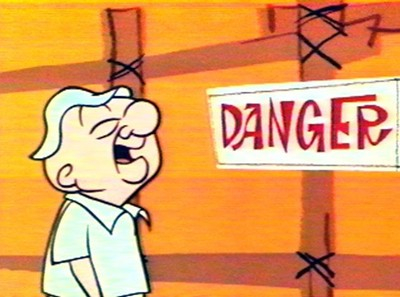







 Richard Hooker’s M*A*S*H — rejected by 21 publishing houses. {“How many Army doctors could there possibly be?” they must have scoffed. “And who else would care?”)
Richard Hooker’s M*A*S*H — rejected by 21 publishing houses. {“How many Army doctors could there possibly be?” they must have scoffed. “And who else would care?”)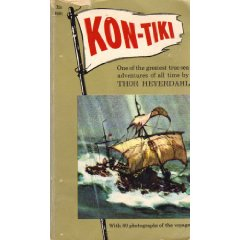 Thor Heyerdahl’s KON-TIKI — rejected by 20 publishing houses. (Yes, THAT Kon-Tiki. “This might appeal to people who sail for pleasure, but can we afford a novel for the yacht-owning niche?”)
Thor Heyerdahl’s KON-TIKI — rejected by 20 publishing houses. (Yes, THAT Kon-Tiki. “This might appeal to people who sail for pleasure, but can we afford a novel for the yacht-owning niche?”)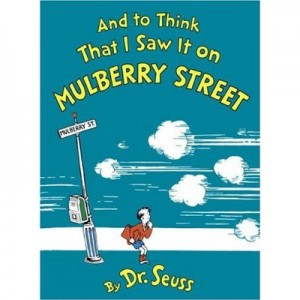 Dr. Seuss’ first book, AND TO THINK THAT I SAW IT ON MULBERRY STREET — rejected by 23 publishing houses. (“Do we really want to confuse children?”)
Dr. Seuss’ first book, AND TO THINK THAT I SAW IT ON MULBERRY STREET — rejected by 23 publishing houses. (“Do we really want to confuse children?”) Richard Bach’s JONATHAN LIVINGSTON SEAGULL — rejected by 18 publishing houses. (“The only person I have ever known who cared about seagulls was my mad great-aunt Kate, who spent her last years wandering down to the beach to offer them caviar on crackers. Next!”)
Richard Bach’s JONATHAN LIVINGSTON SEAGULL — rejected by 18 publishing houses. (“The only person I have ever known who cared about seagulls was my mad great-aunt Kate, who spent her last years wandering down to the beach to offer them caviar on crackers. Next!”)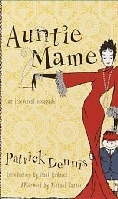 Patrick Dennis’ AUNTIE MAME — rejected by 17 publishing houses. (I have no idea what they were thinking here; perhaps that it was really a memoir?)
Patrick Dennis’ AUNTIE MAME — rejected by 17 publishing houses. (I have no idea what they were thinking here; perhaps that it was really a memoir?)

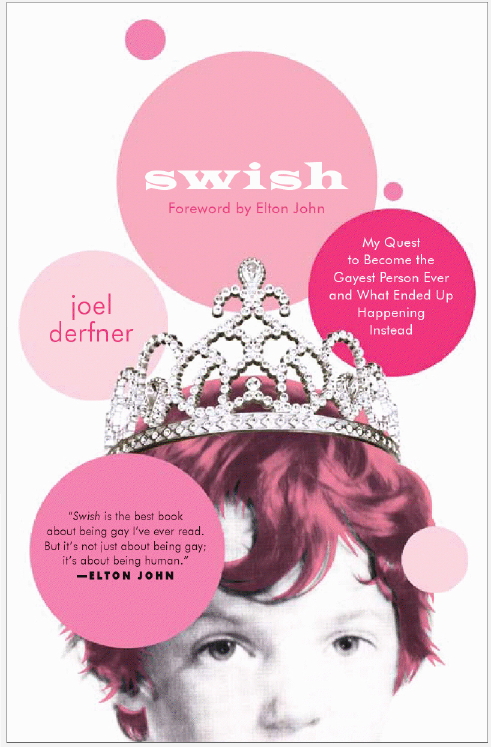

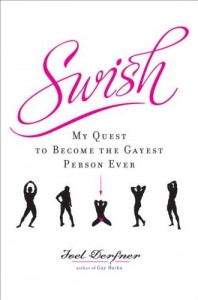
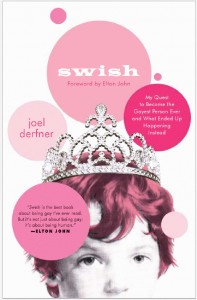
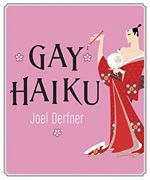






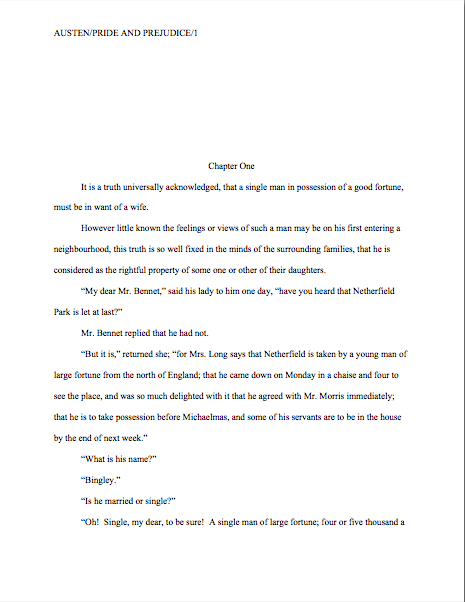



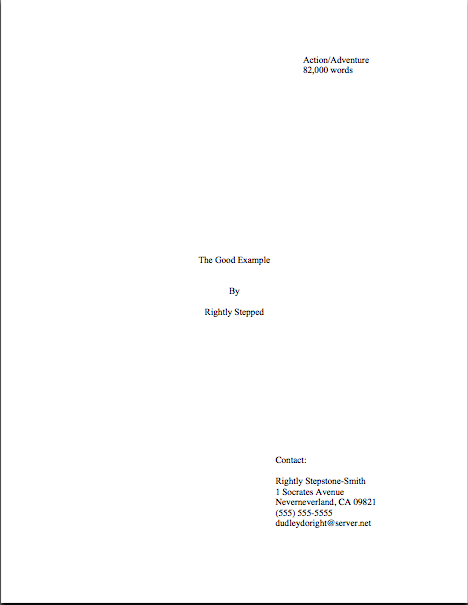


 PS: lovers of fluffy bunnies and winsome chicks should make sure to visit Author! Author this weekend, when we will be visited by a guest blogger I’ve been hoping for a long time would join us here. As some of you may have begun to suspect over the past few days, I’m pretty excited about the prospect.
PS: lovers of fluffy bunnies and winsome chicks should make sure to visit Author! Author this weekend, when we will be visited by a guest blogger I’ve been hoping for a long time would join us here. As some of you may have begun to suspect over the past few days, I’m pretty excited about the prospect.
 PS: don’t forget to check in this weekend for the promised special treat!
PS: don’t forget to check in this weekend for the promised special treat! 
 PS: yes, I know that this series has been long and dense, but I have a fabulous reward in store for you at the end of it: a guest post from an author I’ve been eager to get here to talk to you for a very long time. Hint: he’s funny, and appropriately for the season, there will be small, fluffy animals involved.
PS: yes, I know that this series has been long and dense, but I have a fabulous reward in store for you at the end of it: a guest post from an author I’ve been eager to get here to talk to you for a very long time. Hint: he’s funny, and appropriately for the season, there will be small, fluffy animals involved.





